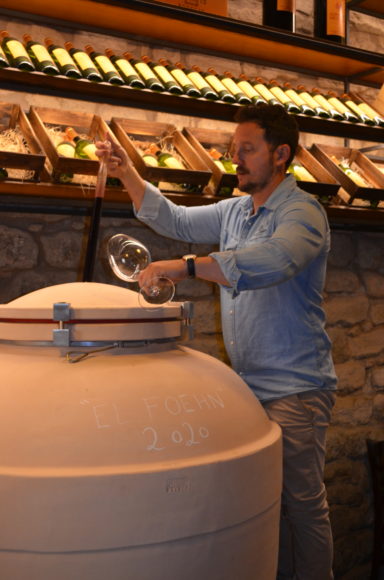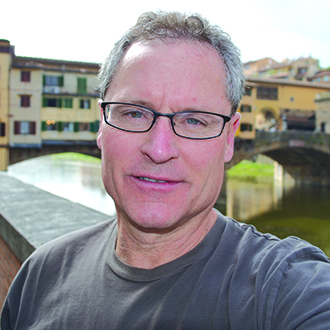I haven’t traveled internationally since my trip to Umbria, Italy, in late February 2020 when Covid was about to close the world. But with vaccines, boosters and virus knowledge, it has felt relatively safe to travel again. So when the Spanish Tourism Board reached out and asked me to participate in a media trip to the Basque country and La Rioja wine region of Spain, I replied with an unequivocal, enthusiastic “yes.”
I have been to Spain several times and tasted the wines of Rueda, Ribera del Duero and Navarra. Still, La Rioja region, Spain’s leading red wine producer, remained an enigma, even though I have tasted the wines of La Rioja many times and have felt they always over-deliver at any price.
I want to share with everyone the demystification of the Spanish wine label. Learn one simple trick and you can pick a high-quality wine for a particular price point. On the back of La Rioja wines is a simple color-coded label that tells you if, and how long, it was oak-aged and how long it rested (by law) in the cellar before release. Red wines showing a red stamp are labeled Crianza and have spent one year evolving in oak. White and Rosé Crianza wines have seen six months in oak.
Red wines showing a burgundy-colored stamp are Reserva wines that have been aged for three years with one of those years in oak. White and Rosé Reserva wines have undergone two years of aging with at least six months in oak. And Gran Reserva wines displaying the dark blue stamp have been aged for at least five years with at least two of those years maturing in oak. White and Rosé Gran Reserva wines are aged for four years with at least six months in oak. Then there are wines displaying a green stamp that indicates an “Author” or “High Expression” wine for which the producer is somewhat exempt from the normal classification system and is allowed to do what he thinks can make the best, and usually, most expensive wine.
We visited Mayor de Migueloa, a winery, restaurant and inn dating from 1619 in the walled city of Laguardia, just over 10 miles from Logroño, the capital city of La Rioja. Jaime Gutiérrez and his wife Mery González renovated the property in 1988, transforming it into the elegant and historic establishment it is today. We tasted their wines, got a comprehensive tour and sat for a multicourse meal in their restaurant. The next morning, I returned for a photo op and Jaime brought me back to his wine-aging room. He asked me to try a wine-aging amphora sample of his “Author” wine. He told me the pricing is yet to be determined: “I know how much it cost me to make it. We will seat some knowledgeable wine folks, with precise and refined palates, and open many Spanish wines ranging from $40 to $1,000. And we will see where on this continuum we fall, to price it appropriately.”
The Spanish classification system is important, because it establishes by law what is required to become reserve or gran reserve. But there’s more. Each wine needs to be blind-tasted by a professional board to determine if it meets the specific standard to get the seal. It takes precise vineyard management, reduction of harvest yields for better grapes, highly evolved winery practices, time, space and expensive oak barrels to bring these wines to market. I visited Total Wines in Norwalk and bought a few Rioja wines up and down the classification system. A 2017 Marqués de Cáceres Crianza is priced at $13. I found two 2016 Reservas — the Coto de Imaz, which retails for $24.50, and the Muga for $43. Of the two Gran Reservas, a 2013 Viña Alarde sells for $30, while the 2015 Coto de Imaz is $27.50. The 2014 Torre Muga “Author wine” (green stamp on back) is $100.
La Rioja region has so much more than just exceptional wines. There are 21 Michelin-starred restaurants, dramatic churches, cathedrals and monasteries dating back centuries, walled cities and old town historic sections of modern cities, The Camino de Santiago (the Way of St. James the Greater) is a network of ancient pilgrim routes across Europe culminating at the Cathedral of Santiago de Compostela in Galicia in northwest Spain. Bike trails, golf courses, pintxos (snacks) and tapas restaurants also abound.
La Rioja tourism board and the Spanish tourism board have welcoming sites with a wealth of information on planning everything for your trip. I’m still happily recovering from the trip of a lifetime.
For more, visit mayordemigueloa.com, lariojaturismo.com and spain.info. And write Doug at doug@dougpaulding.com.


